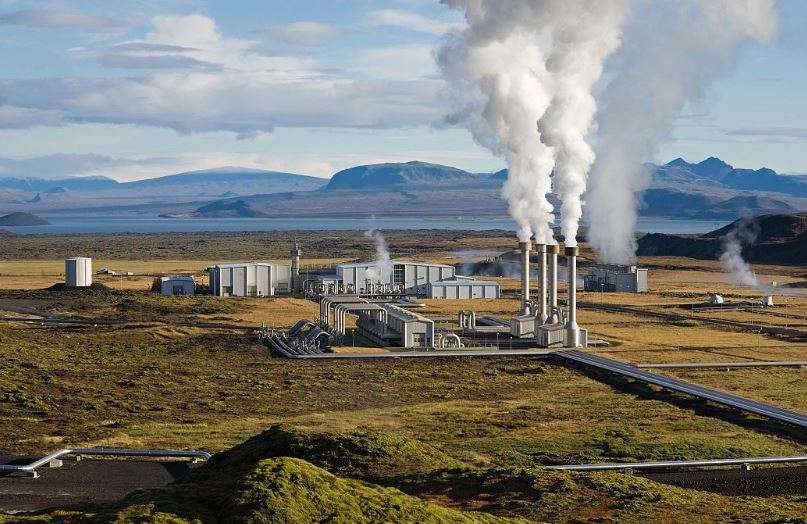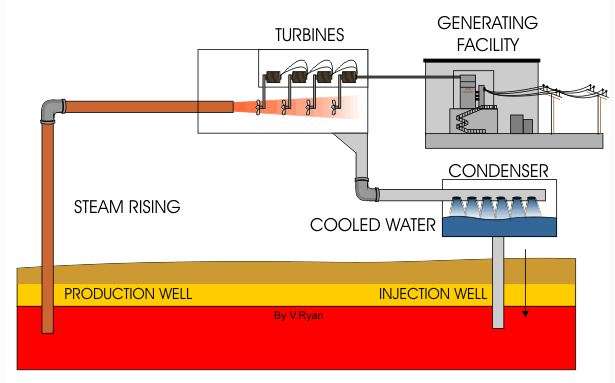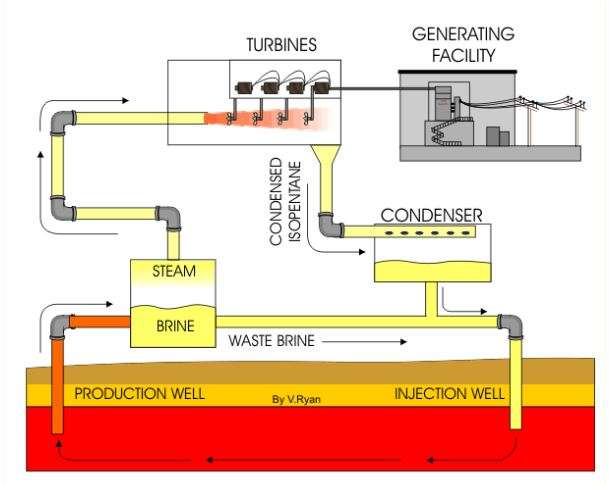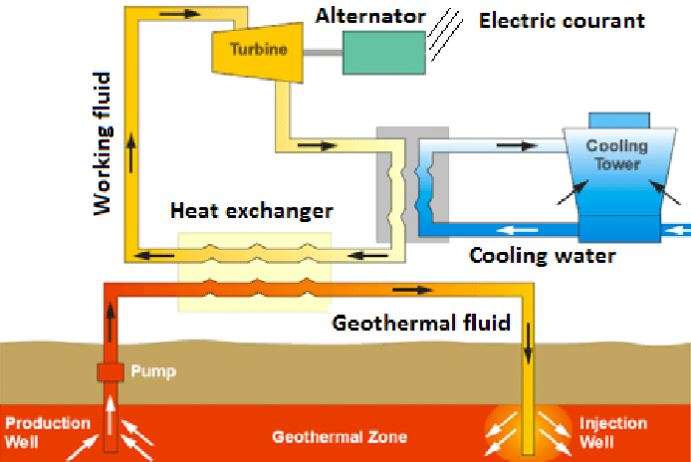Geothermal Power Plants
In several places of the world, geothermal power plants are employed to produce a sustainable and ecologically beneficial source of electricity. These power plants rely on geothermal activity that occurs deep beneath our feet. In this post, we will look at geothermal power plants and how they generate electricity from geothermal energy.

Different Types of Geothermal Power Plants
Today, there are three types of geothermal power plants in operation:
Dry Steam :– This is the most basic and oldest type of geothermal power plant.
Flash Steam :– This is the most common type of geothermal power station currently in use.
Binary Cycle :– This is the most recent advancement in geothermal power plant design.
How Do They Work?
Geothermal power plants operate in the same way as other thermal power plants, with a turbine powered by steam. The specific procedure varies depending on the type of geothermal power plant, as all three operate in slightly different ways, but they all have an injection well and a production well in common.
The sections that follow explain how each form of geothermal power station design may generate electricity.
Dry Steam Geothermal Power Plants

The dry steam power plant concept uses geothermal steam at temperatures of 150°C or higher. Cold water is pushed deep into the earth through the injection well. When water encounters hot rocks, it condenses into steam, which is subsequently extracted via the production well. This steam is then delivered straight into a steam turbine, which turns a generator to generate power. The main issue with this design is that too much cold water must be pumped into the earth to avoid overcooling the rocks and depleting the geothermal hot zone.
Flash Steam Geothermal Power Plants
The design of a flash steam power plant is similar to that of a dry steam power plant, except that steam is not withdrawn through the production well. Instead, through the production well, high pressure water that has been superheated to at least 180°C is taken from deep under the earth. The pressure falls as the liquid travels toward the surface, causing part of the fluid in the well to separate or “flash” into steam. Once at the surface, the liquid is routed through a number of mechanisms that lower its pressure even further. More fluid can “flash” into high-pressure steam, which can subsequently be fed into the steam turbine to generate energy.

Any residual liquid in modern flash steam power plants can be returned to the reservoir deep beneath the earth’s surface via the injection well. Furthermore, the steam used by the turbine can be sent through a condenser, converting it back to a liquid that can then be returned to the reservoir. All of this meticulous management reduces the likelihood of a geothermal hotspot becoming depleted.
The most frequent type of geothermal power plant in use today is flash steam plants. Pumped from deep down, fluids with temperatures more than 182°C/360°F flow under high pressures to a low-pressure tank near the earth’s surface. Because of the pressure difference, some of the fluid rapidly transforms, or “flashes,” into vapour. The vapour then powers a turbine, which in turn powers a generator. If there is any liquid left in the low-pressure tank, it can be “flashed” again in a second tank to extract even more energy.
Binary Cycle Geothermal Power Plants

The binary cycle power plant design functions similarly to the flash steam power plant, except that it may use water as cold as 57°C. This is accomplished by passing the water through a secondary fluid with a significantly lower boiling point than water. This causes the secondary fluid to flash into steam, which is then delivered into the turbine to generate energy.